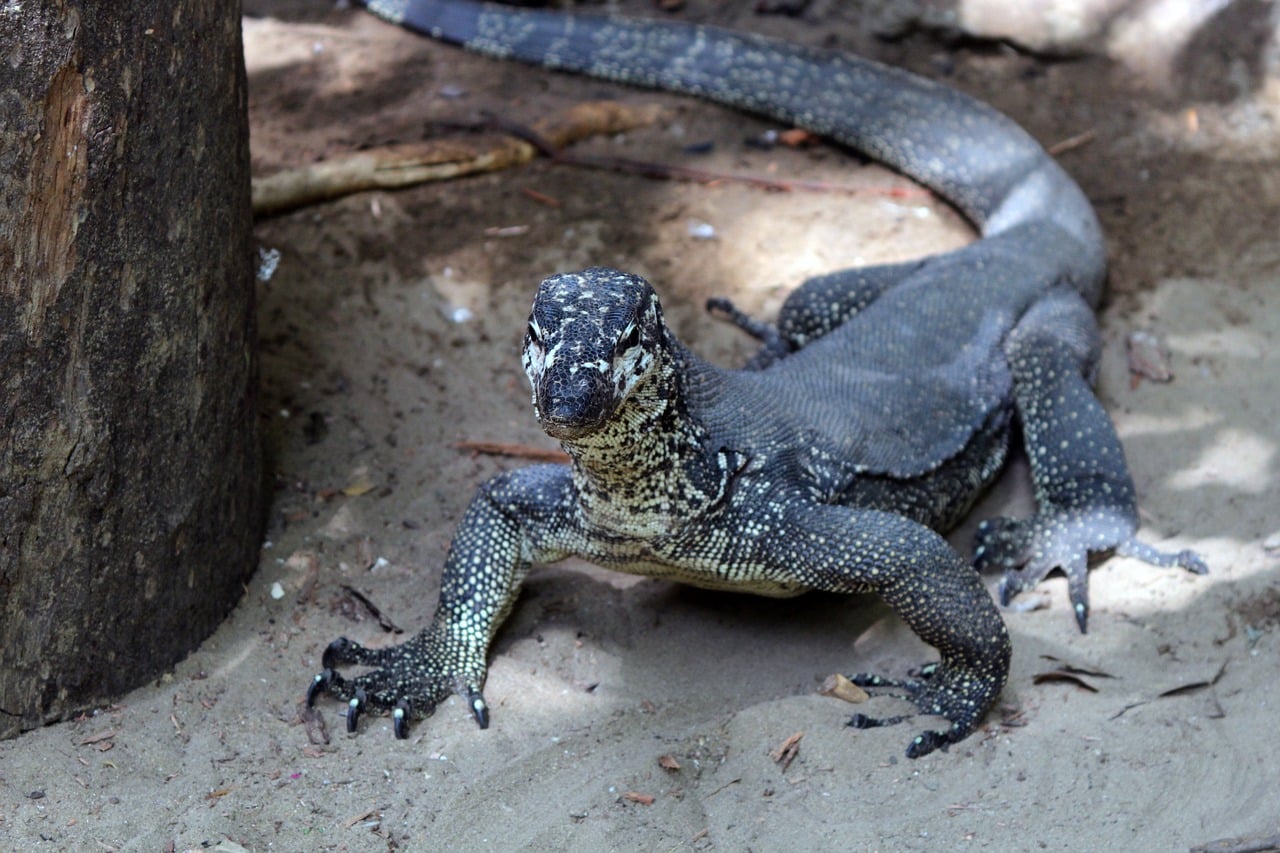Scientists have released new findings on an ancient monitor lizard they say has been extinct for millions of years. They believe the species they call Saniwa ensidens had four eyes, which they say is unlike anything they’ve ever seen in any other land animal with a jaw. They believe their findings on the four-eyed lizard reveal implications into how the eyesight of vertebrates evolved over the millennia.
Four-eyed ancient monitor lizard discovered
Researchers from Yale and Germany’s Senckenberg Research Institute published their findings on the ancient monitor lizard in the journal Current Biology. They offered evidence that the now-extinct Saniwa ensidens had one set of pineal eyes and a second set of parapineal eyes, or four eyes in total, with the second set of eyes located on the top of the lizard’s head. Some scientists refer to the pineal organ as a “third eye,” and some species of vertebrates, like frogs and fish, do still have a third eye, although researchers believe this third eye was much more widespread among vertebrates during primitive times.
According to researchers, most higher vertebrates except for lizards shed the third eye gradually over the generations. However, other scientists have previously suggested that the third eye that lizards have actually developed from another organ known as the parapineal. The team that conducted this latest research into the ancient monitor lizard believes that their findings about the creature’s four eyes solidify the belief that the third eye found in lizards actually is different from the third eye they believe other vertebrates had many millennia ago.
The researchers believe their findings demonstrate how easy it is for creatures to develop more (or fewer) eyes when specific circumstances arise.
“Eyes are classically thought of just as these remarkably complex structures,” Yale paleontologist Bhart-Anjan Bhullar explained in an article on the university’s website. “In fact, the brain is just waiting to make eyes at all times.”
Fossils discovered more than 100 years ago
Their study of the ancient monitor lizard started with Saniwa ensidens fossils unearthed during the 1870s in Wyoming. They used a CT scanner to examine the structures of the fossil fragments, and they found holes in the creature’s skull which show where the third and fourth eyes would have been.
They now believe that the pineal and parapineal eyes were more than just organs. Lead author Krister Smith of the Senckenberg Research Institute explained that the pineal and parapineal eyes could both sense light and described some of the abilities granted by the pineal eyes as “really quite extraordinary.” Smith added that the organs enabled some species of lower vertebrates to pick up on the polarization of light, using it as a way to determine where they are in terms of geography.
The Yale-Senckenberg team highlighted that their findings regarding the ancient monitor lizard demonstrate that there’s still much to learn about what scientists refer to as the “lizard shift,” which is the timing of the third eye’s development among lizards. The team adds that more research is needed to gain a deeper understanding of how eyesight developed among vertebrates.
Bhullar also said that studying the development of eyes in vertebrates is important because the formation of an eye “is part of the process of how the brain comes in contact with part of the skin.”





